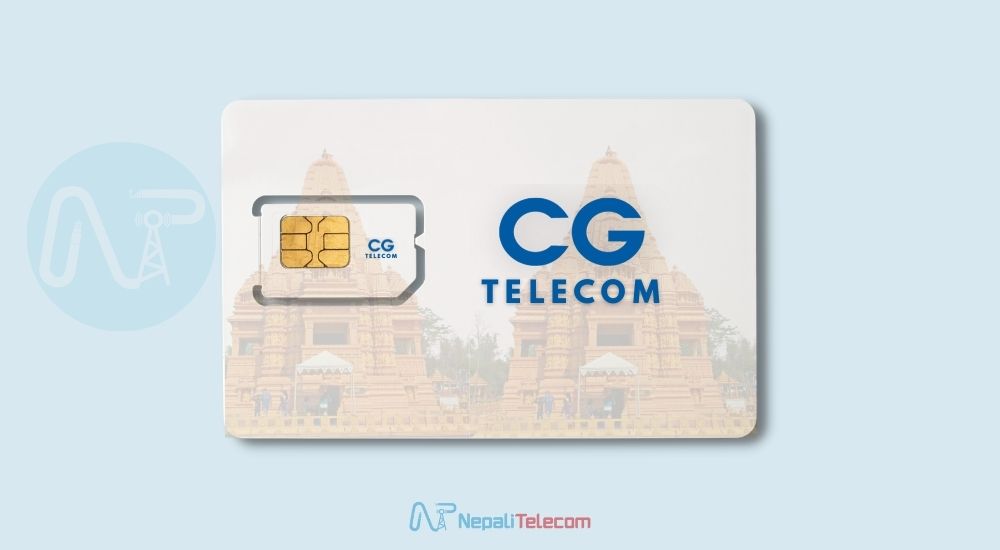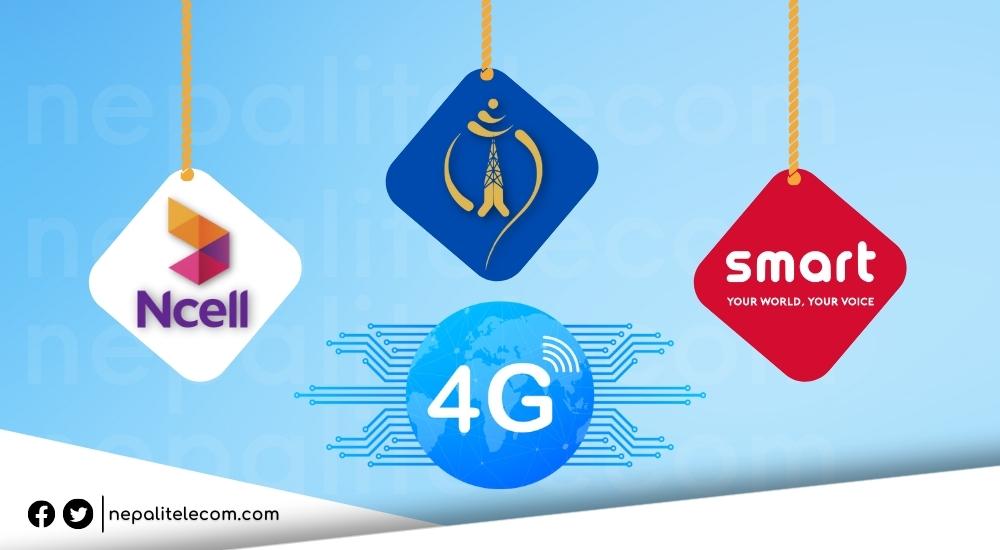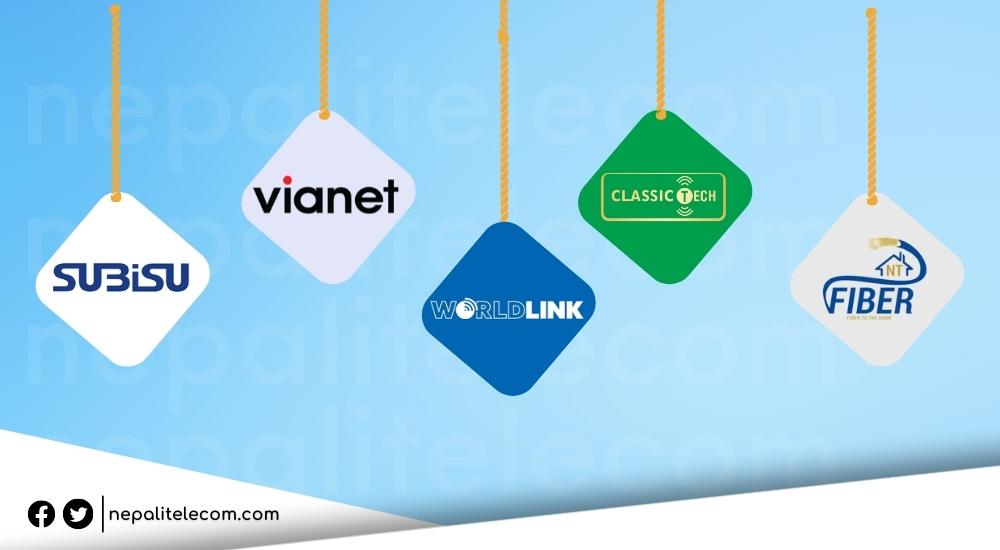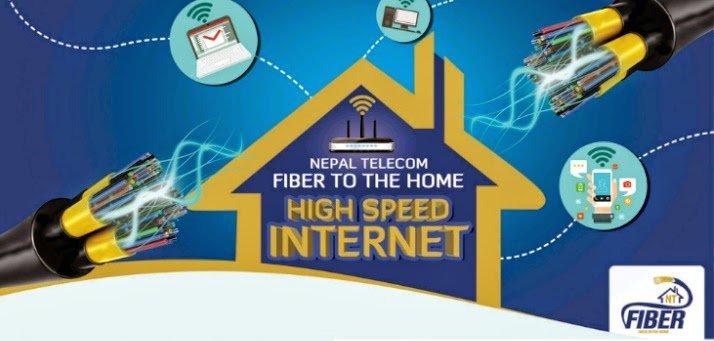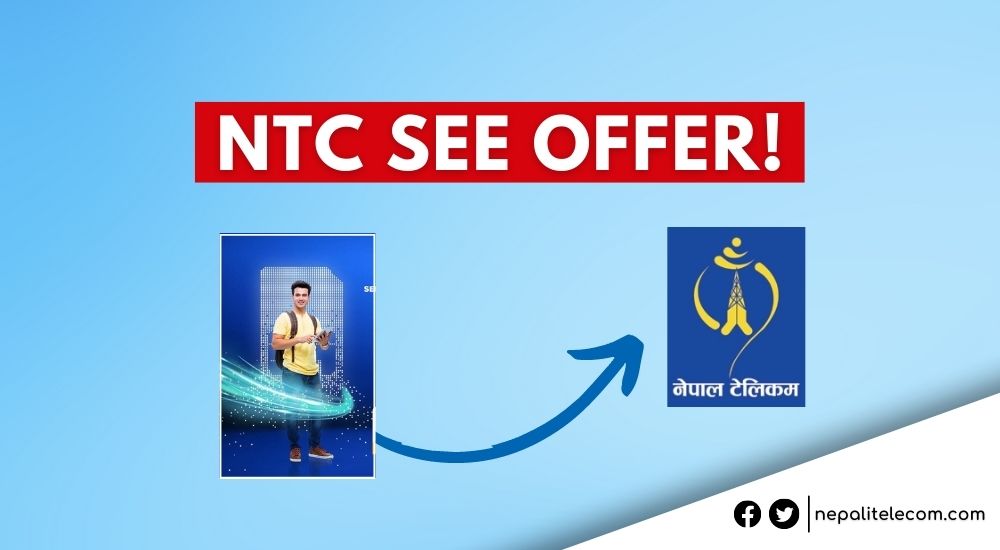As we approach the end of Chaitra, we bid farewell to a year of some exciting events in the telecom industry in 2081. Particularly, the year saw the launch of WiFi Calling (VoWiFi) while fiber went across 77 districts. But still, 5G went without a show but with a strong promise of its availability next year. In sum, it was quite an interesting and exciting year for the telco sector of Nepal. In this article, we will get you through all the major events that occurred in the telco industry of the country. Let’s find them all:
Table of contents
- Telecom Industry in 2081: All the highlights
- Ntc and Ncell launch VoWiFi
- Ntc fiber reaches 77 districts
- Nepal Telecom becomes the second-largest internet service provider
- NTA policy impacted telco service expansion
- WorldLink reached 10 lakh fiber users
- More 4G and fiber internet users
- NTA plans to cut off the Free WiFi Mobility service
- Telecom revenues continue to frustrate
- Subscription-based business model comes under discussion
- Ncell brings Sadhain ON and follows with Renewal Packs
- Ntc Ncell mobile license renewed
- Discussion of Ntc 2G in 1800 MHz shutdown and 3G shutdown.
- Huawei to build NT data center while WorldLink operates Nepal’s largest
- What to expect in 2082 from the telecom industry?
- Final thoughts on the year in the telecom industry in 2081
Telecom Industry in 2081: All the highlights
Ntc and Ncell launch VoWiFi
Ok, let’s start with some of the best highlights of the telecom industry of 2081. And that is the launch of VoWiFi (WiFi Calling) from both Ntc (Nepal Telecom) and Ncell. The former officially launched the service on its 21st anniversary, while Ncell introduced the service shortly after. The service lets users place calls over an active WiFi network, so users don’t need to rely only on cellular towers. Therefore, users can still make calls in areas where the mobile network is low or inconsistent. Currently, Ntc VoWiFi is available on select models of iPhones and Android devices, while Ncell provides its VoWiFi on select iPhones only, with a plan for wider compatibility in the coming months.
Ntc fiber reaches 77 districts
Another major telecom milestone of the year has to be Nepal Telecom extending its fiber internet coverage to 77 districts. That means the state-backed telecommunications giant has brought its FTTH fiber internet to all the districts, which is a significant event in the communication sector for connectivity. NT Fiber, the brand under which the company serves its customers, provides affordable and high-speed internet packages. Also notable is that the company has expanded its service in mountainous districts such as Humla and Dolpa, which is vital for the digital Nepal goals.
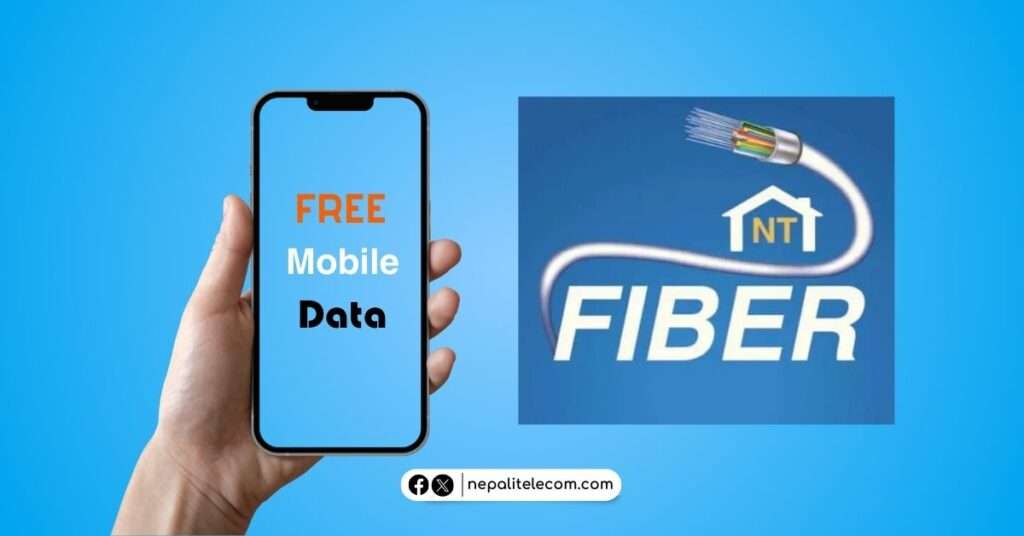
The company provides Triple Play services with its FTTH service, which brings fiber internet, telephone, and voice service in the same subscription. It’s making NT fiber a popular choice among the internet customers of the country.
Check out: Top 10 reasons to choose NT Fiber
Nepal Telecom becomes the second-largest internet service provider
This year also saw Nepal Telecom become the largest internet service provider (ISP) of Nepal in terms of user base. The company displaced Dish Media to reach the second rank on the list. As per the latest report from Nepal Telecommunications Authority (NTA), the company has over 3.50 lakh internet subscribers, an odd five thousand more than Dish Home’s. The stats reflect NT’s growing popularity as an ISP thanks to its wide range of affordable internet packages. But its rise also gives tough competition to the private ISPs.
NTA policy impacted telco service expansion
In a not-so-desirable event, NTA’s lack of facilitations for Ntc and Ncell derailed both companies’ efforts of service improvement and expansion. The dispute over the payment of the 2100MHz pit NTA is in direct conflict with the two telcos. But thankfully, the Patan High Court has given its verdict on the matter. As a result, NTA has started facilitation for both Ntc and Ncell. Both companies can now get forex recommendations, import telco equipment, and conduct necessary infrastructure improvement and expansion works.
Check out: 2100 MHz Spectrum fee Controversy
WorldLink reached 10 lakh fiber users
In another ISP milestone, private ISP WorldLink reached 10 lakh customers in Falgun, 2081 and even changed its logo on that occasion. The achievement makes WorldLink the largest ISP of Nepal in terms of user base. The number, which translates to a million in the English numbering system, refers to a unique number of subscribers that makes the data even more impressive. The company now focuses on expanding its services to more hilly and mountainous areas with continuous service improvement and upgrade works.
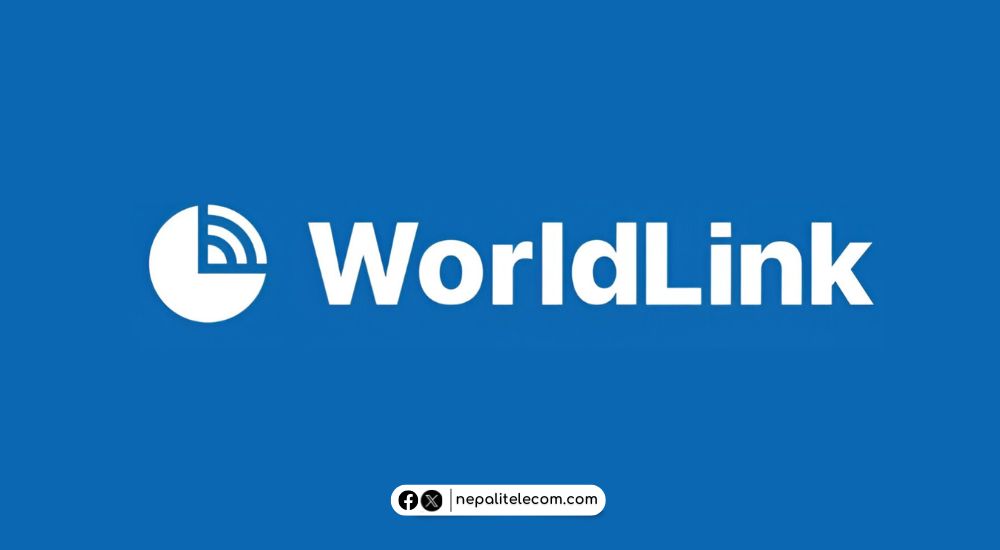
More 4G and fiber internet users
The year also saw more users joining the 4G and fiber internet connections. As per the latest NTA report, there are now 2.51 crores 4G users, with NT boasting over 1.33 crore users and Ncell 1.17 crore. At the same time, the authority reported over 30.50 lakh fiber internet users.
NTA plans to cut off the Free WiFi Mobility service
In a not-so-likeable twist, NTA has revealed its plan to close free WiFi mobility service provided by ISP, WorldLink. Through this move, the authority aims to boost revenues for telecom operators Ntc and Ncell. This comes amidst telcos’ complaints that free WiFi hotspot services have impacted telcos’ revenues through data packs. But the decision hasn’t been formally made on shutting down the free WiFi mobility service. So, that’s still some relief for the general users who are in the habit of connecting to the free WiFi hotspot of WorldLink in places such as restaurants, gyms, and other public places.
Telecom revenues continue to frustrate
It was another year, but still a bleak one for telecom companies in terms of revenue generation. Both Ntc and Ncell saw their revenues decline in the year 2081, forcing companies to contemplate subscription-based telecom services. In recent years, the telco industry’s revenue has been on a falling trajectory. This situation continued through the year.
Subscription-based business model comes under discussion
Another key industry for the telecom industry in Nepal in 2081 has to be that telcos started discussions for a subscription-based telecom business model. In particular, Ncell is pushing for this system of business to save the industry and the telcos. The company’s CEO and MD, Jabbor Kayumov, has been stronger in the launch of this model.
Ncell brings Sadhain ON and follows with Renewal Packs
This year, Ncell started a revolutionary Sadhain ON packs as a road to the 5G revolution. The mobile pack under the Sadhain ON scheme comes with innovative features such as carryover no balance shock, etc. Further, the telco followed with Ncell auto-renewal packs with 30-day validity as part of its plan for subscription-based telecom service to its customers. And the Renewal Packs have been a massive success with the telco gaining 200,000 subscribers in just a month of their launch.

Ntc Ncell mobile license renewed
The year also saw both Ntc and Ncell get their license renewed. Ntc paid Rs 20 billion for a new license while Ncell got its license renewed after paying Rs 5 billion, with the remaining to be paid at an interest of 10%. The company will need to pay Rs 5 billion each in the next three installments. The license renewal allows both telecom companies to operate their services across Nepal.
Discussion of Ntc 2G in 1800 MHz shutdown and 3G shutdown.
I must add that the discussion of Ntc shutting down its 2G in 1800 MHz and Ncell ending 3G by the first half of 2082 must be the other two highlights of the telecom industry in Nepal in 2081. Both companies said that after phasing out their respective cellular networks, they will refarm the resources for more modern technologies, which are probably 4G and 5G. It’s not surprising that both telcos announced to see off their 3G networks being less relevant in today’s world, dominated by 4G and 5G will dwarf them in performance. So, both Ntc and Ncell are now focusing on expanding 4G and getting ready for 5G network.
Huawei to build NT data center while WorldLink operates Nepal’s largest
The year also saw NT selecting to Huawei to build its data center in Bhairahawa and Kathmandu. The company’s spokesman has said that the company will utilize the data center as a source of revenue generation. It will be equipped with a continuous power supply, CCTV surveillance, and able switches, etc.

In the meantime, WorldLink also completed the construction of Nepal’s largest data center in Chandragiri. It’s got a 3.5-megawatt IT power capacity and 520 racks. It’s also the first Tier-3 and Edge-certified green data center in Nepal. The ISP says that it will be up for use by other businesses too. The infrastructure is said to be one of the milestones in the digital transformation of Nepal.
What to expect in 2082 from the telecom industry?
More VoLTE users, VoWifi users in 2082
2081 saw the growing users of VoLTE in both Ntc and Ncell. As per the NTA report, Ntc has over 13 lakh VoLTE users while Ncell boasts over 8.80 lakh VoLTE subscribers. Similarly, VoWiFi has just begun this year, so in 2082, the user base should grow by a huge margin.
5G to come in major cities by 2082
We only ended up waiting for 5G in 2081, but the current communication minister, Prithvi Subba Gurung, has said that Ntc will soon launch 5G in major cities by the end of 2082. So, there’s strong hope that that will materialize as there is still enough time for that. Many have bought 5G phones anticipating the launch of 5G, but let’s be really hopeful that 2082 gives us 5G. The fact that there are many 5G devices now also gives more reason to believe that NT will roll out 5G, at least in some major cities, next year.
Check out: 5G in Nepal | Spectrum, Trial, Launch
Affordable service and packages to suit customers’ demand
Well, the demand for more affordable packages is always there, and the same should be expected in 2082. Nepali users have long complained that we spend a bit too much on data packs and regular pay-as-you-go (PAYG) services, and on internet subscription compared to other countries.
We must give credit to telecom and internet companies for making efforts in providing affordable services. However, services still feel expensive. For e.g., if I want internet at a cheaper rate, then I have to make a compromise with just an internet-only package that skips TV.
Prices for internet and overall telecom services must be holistically more accessible to users. Let’s hope the government and stakeholders bring something to that department in 2082.
Check out: Find the Radio Frequency Policy for Telecom Services
Final thoughts on the year in the telecom industry in 2081
2081 has been a good year for the telco industry in Nepal in terms of new service launches and license renewal for Ntc and Ncell. The year also saw the expansion of fiber internet across all the districts of Nepal. But the high price for services, occasional internet shutdown, and NTA’s plan to end WiFi mobility services were less flattering.
The biggest issue for the industry should still be the financial issues that have deteriorated the industry for a few years now. If this situation is reversed, that could help lower the service tariffs and also boost the national economy. Overall, it was a good year for the telecom industry.
See: Ncell to buy Classic Tech? Telco issues official statement
Did we miss any telecom event worthy of a mention? You can share with us in the comments, so we will update this article.





